Driving profound changes in an era of decarbonization through strategic shifts in perspective.
Which takes precedence: energy usage or budgeting? Investing or earning? Behind each seemingly straightforward question lies a deeper truth about the path to sustainable development. State Grid Quzhou Power Supply Company unearthed the solution to Quzhou’s industrial energy consumption challenges. Through two strategic shifts in perspective, the company has developed a digital business model for carbon reduction that collectively benefits governments, consumers, and power grids, igniting profound changes in this era of decarbonization.
The widespread slogan, “You want, I want, everyone wants!” may immediately brings to mind the renowned Want Want Milk. The narrative of State Grid Quzhou Power Supply Company intriguingly commences with this bottle of milk.
The factory that produces Want Want Milk, Zhejiang Ming-Want Dairy Ltd. (Ming-Want Dairy), is located in Quzhou City, Zhejiang Province. This city strategically linking four provinces in China, is the heartbeat of Zhejiang’s “Great Garden” vision. It is celebrated for its rich cultural heritage and abundant ecology. However, Quzhou is also Zhejiang’s hub for the heavy chemical industry. Its high energy consumption brings a formidable challenge to local carbon reduction. Especially in the context of China’s “30-60” decarbonization goal, local enterprises like Ming-Want Dairy have to align their growth trajectories with the country’s ambitious energy conservation and carbon reduction mandates.
In the broader theater of carbon peaking and neutrality, the energy domain is thrusting into the limelight, positioning the electricity sector center stage. As an important local power supply company, the State Grid Quzhou Power Supply Company is naturally duty-bound to help local enterprises towards reaching the “carbon peaking and neutrality” goal.
The first shift: From “use first, manage later” to the contrary
Given that the energy consumption intensity of Quzhou City, 0.81 TCE/RMB 10,000 of yield, is twice the average level of the whole province, the carbon and emission control scenario is grim. To solve the challenge in the transformation and upgrading of local industrial energy consumption, State Grid Quzhou Power Supply Company first conducted a comprehensive survey of 145 companies across diverse sectors in groups, augmented by on-site assessments by relevant departments.
Conventionally, the energy management mindset was simple: consume energy first, and regulate it later. However, the survey highlighted two significant pitfalls of this mindset.
For one, many companies were in the dark about their own energy consumption and carbon footprints. During its visit to Ming-Want Dairy, State Grid Quzhou Power Supply Company realized that there was a lack of a comprehensive platform for tracking energy consumption and carbon accounting. Consequently, businesses often relied on data that was outdated, lacking in detail, and infrequently updated. Accurately measuring and accounting for energy consumption and emissions thus became challenging. For a long time, many enterprises were directionless regarding their energy and carbon efficiency metrics, grappling with ambiguous consumption patterns, indeterminate reasons for waste, and murky cost-control pathways. Such obscurity led to elevated investment and operational costs in energy-saving and carbon reduction, with a noticeable absence of effective technical solutions and a sustained motivation for carbon reduction.
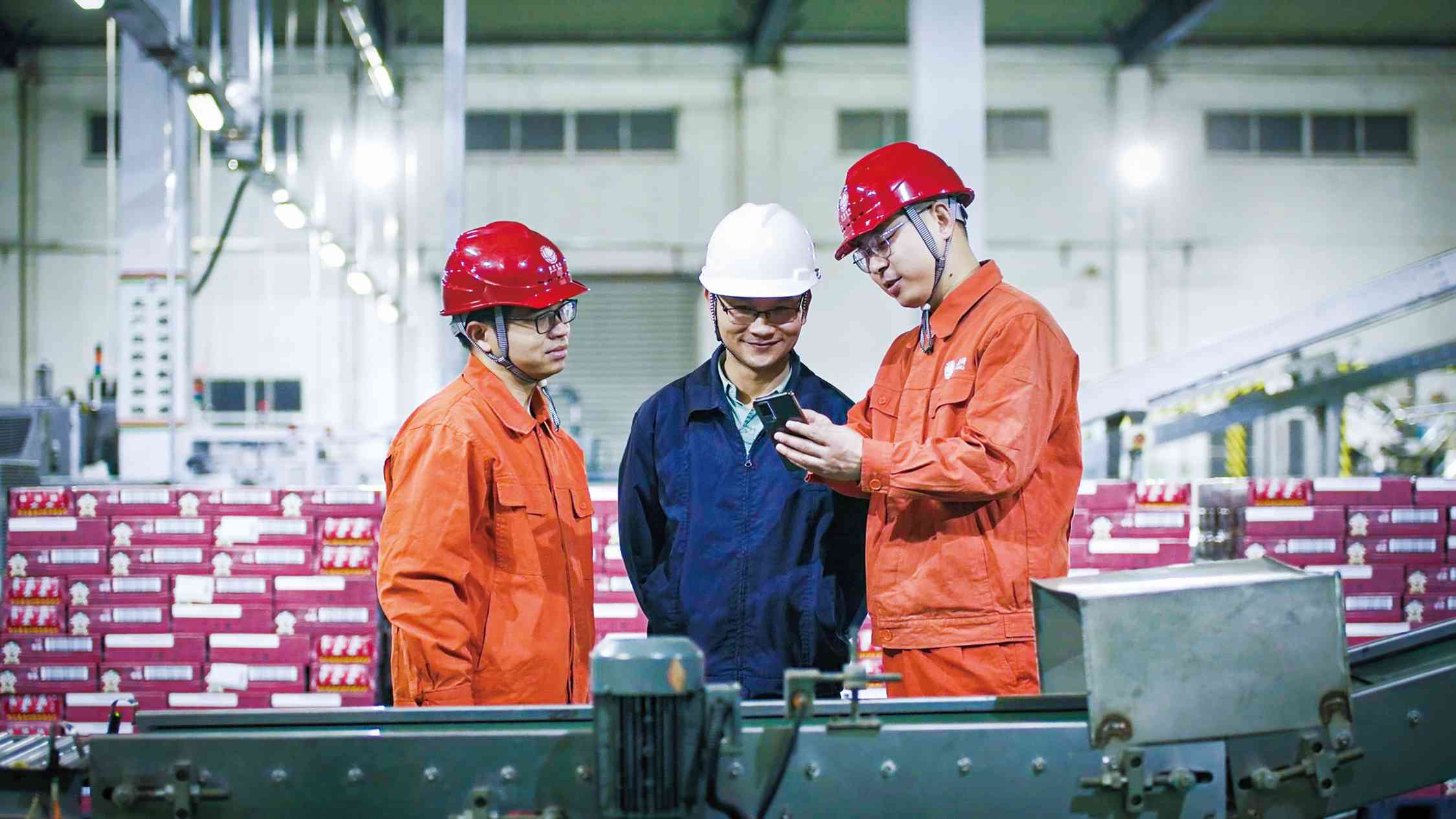
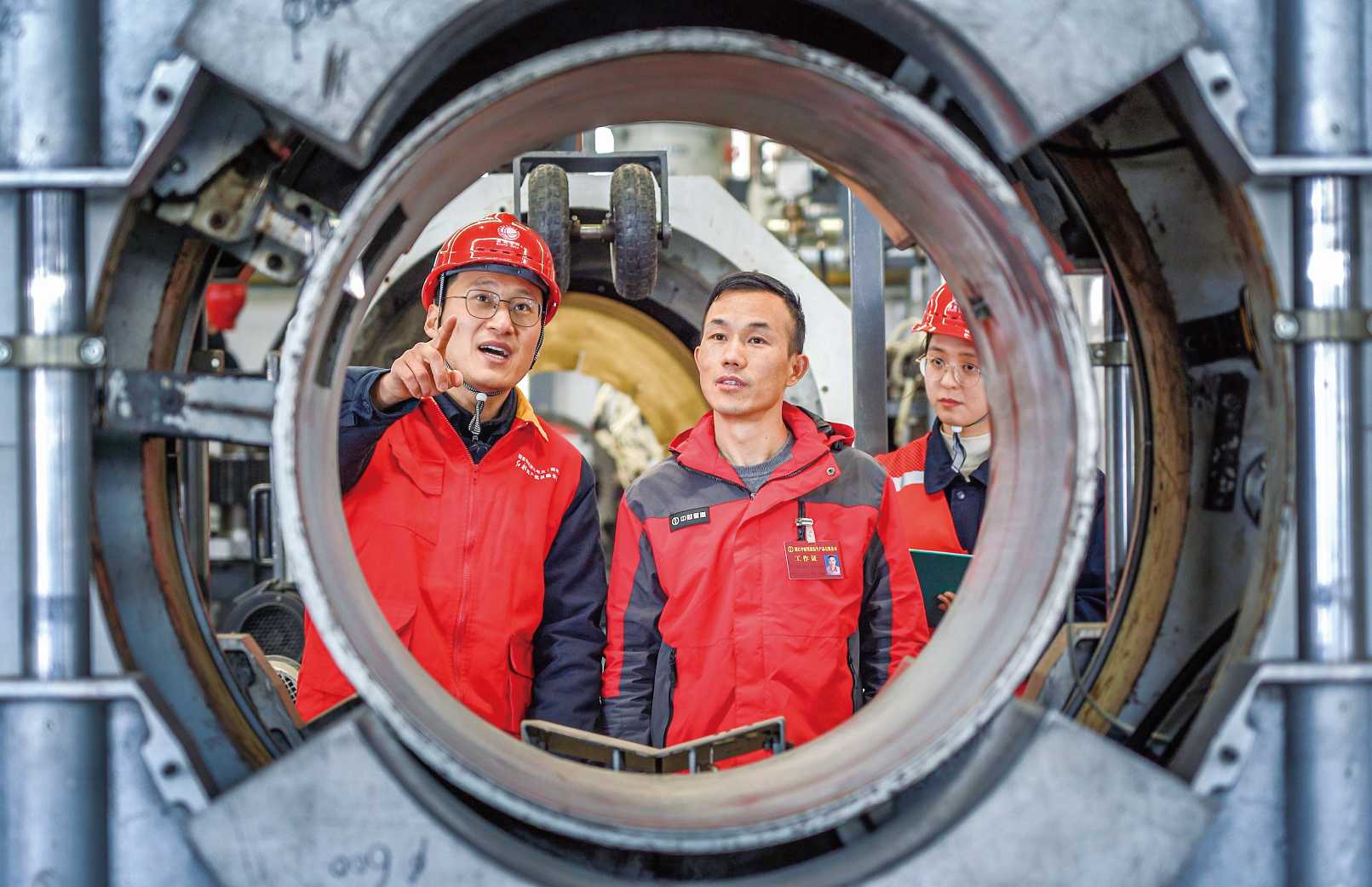
At the same time, the traditional regulatory approach allowed companies to consume energy without much foresight, only imposing restrictions after over-consumption had already occurred. When enterprises lack lucidity on their energy efficiency metrics and consumption trends, the “consume first, limit later” approach jeopardizes accurate risk forecasts. While the “one-size-fits-all” framework, encompassing electricity usage regulations, production caps, and shutdowns, can effectively manage industry energy consumption indices, its prolonged and frequent use could negatively impact local economic growth and social stability.
Everyone knows that for effective budgeting, it’s wiser to plan expenses in advance rather than spending recklessly before reconciling accounts. Similarly, for businesses aiming to save energy and cut carbon emissions, a shift in perspective is essential. The objective is precise government-controlled energy and carbon management in tandem with enterprise-led efficient energy conservation and carbon reduction. Recognizing this concept, State Grid Quzhou Power Supply Company decided to launch a digital revolution, aiming to devise a digital tool for intelligent “carbon peaking and neutrality” governance. The revised approach endorses the “budget energy first, then consume” idea, instead of the “consume, then moni- tor” strategy.
Having identified the problem’s root,the path ahead was clear: implement the optimal solution.
To address energy and carbon data silos, State Grid Quzhou Power Supply Company actively collaborated with the government and other key stakeholders. By leveraging collective resources, they pioneered the country’s first industrial enterprise carbon account in Ming-Want Dairy. This account system collates accurate energy consumption data and carbon emissions produced during manufacturing. It not only calculates the total carbon emissions and carbon emission intensity for enterprises but also contrasts these against industry standards. Companies are then color-coded with “red, yellow, light green, or dark green” labels to represent their carbon emission performance tiers. This method facilitates a more accurate and tailored benchmark for businesses to reduce their carbon footprint and energy consumption. In essence, Ming-Want Dairy’s once “blurry ledger” of emissions is now clearly accounted for.
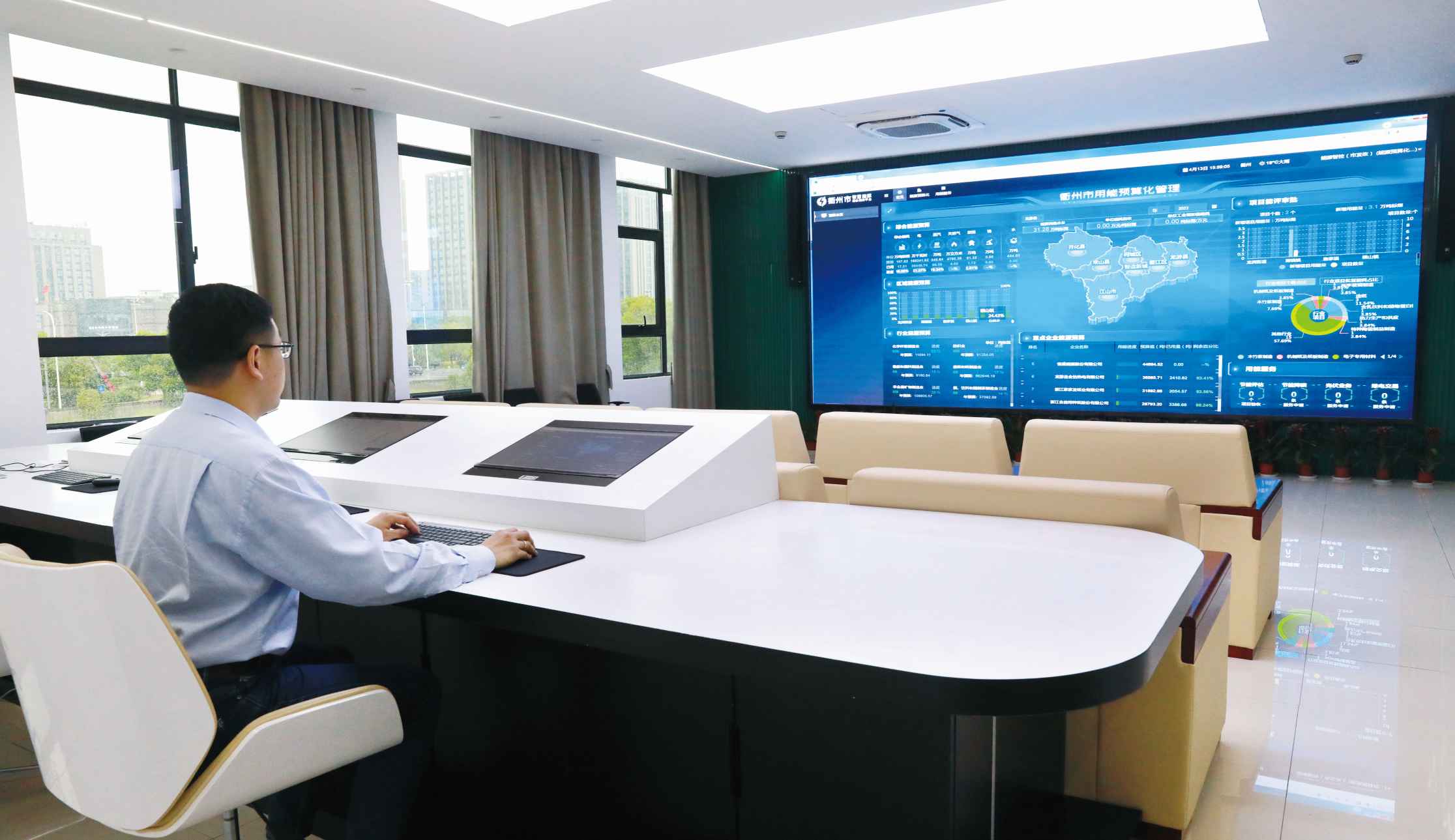
After solving the energy consumption problem of enterprises, the obstacles encountered in government management should be removed too. In 2021 December, building upon the carbon ledger, State Grid Quzhou Power Supply Company enhanced its digital carbon reduction tool and pioneered China’s first energy budget management platform for government and enterprises, the energy budget “e-account”. This platform bridges data silos between government entities and businesses, and build a precise management path of “Budget first, energy consumption later”.
This platform encourages the government to employ energy consumption metrics for differential allocation, directing essential energy resources toward priority sectors, thus fostering the growth of industries that provide high value with minimal energy consumption. Meanwhile, enterprises can adjust production and balance energy use according to early warning, participate in energy budget margin trades and green power deductions, obtain support from green carbon reduction loans, boost the economic yield of unit energy use, and ultimately promote sustainable urban development.
Thanks to the “e-account”, 1,158 industrial companies with annual revenue of more than RMB 20 million in Quzhou have their budget allocations confirmed. Moreover, 450,000 TCE has been rechanneled from 184 energy-intensive companies to back 974 high-quality businesses. This redirection has spurred 241 high-carbon, low-efficiency companies to funnel RMB 6 billion into tech overhauls. An impressive RMB 63.351 billion in green carbon reduction loans has been issued, aiding businesses in slashing carbon and trimming costs by RMB 300 million. In early 2023, Quzhou’s carbon trading margin stood at 860 tons, generating RMB 47,300 in revenue for businesses. This not only enhanced the economic value of energy used for each ton of output but also alleviated the companies’ capital flow pressures. Year-on-year, Quzhou’s overall carbon emissions plunged by 6.3%, energy consumption per unit of GDP dropped by 2.4%, and the region’s clean energy use surged by approximately 5%.
Today, the “e-account” project has also been included in Zhejiang Province’s inaugural batch of digital government system initiative titled “Innovate in One, Share across Many”. Winning the Zhejiang Province reform breakthrough nomination award, its reach has expanded to re- gions like Guangdong and Anhui, aiding in their carbon-reducing transformations.
The second shift: Advancing carbon reduction returns from “late” to “early”
While the groundwork had been laid, the predicament of high costs, limited methods, and diminished motivation for enterprises’ carbon reduction efforts remained. A pressing question arose: Must businesses endure the financial strain of current carbon reduction investments? Could the cost-benefit dynamics be restructured?
After thorough research, State Grid Quzhou Power Supply Company identified a burgeoning market-driven energy-saving model — EMC (Energy Management Contract). Contrasting the conventional “invest first, benefit later” mindset, EMC encourages enterprises to use anticipated energy savings as capital to upgrade infrastructure, thus reducing present operational expenses.
Leveraging this approach, State Grid Quzhou Power Supply Company rolled out a one-stop yet diversified “green energy + energy efficiency” EMC service model. Initiating with Ming- Want Dairy in 2020, State Grid Quzhou Power Supply Company customized an energy and carbon management platform for Ming-Want Dairy with an investment of over RMB 47 million. This platform offers detailed online energy monitoring across production lines and equipment, providing insights into Ming-Want Dairy’s energy-saving and carbon-reduction needs. It also provides services and products for technological upgrades, as well as policy incentives and fiscal support, realizing “saves” and “lends” at the same time.
Under the “green energy” umbrella,photovoltaic, as a representative clean energy, facilitates source-level carbon reduction. State Grid Quzhou Power Supply Company installed a 10.38 MW distributed photovoltaic power station on the rooftop of Ming-Want Dairy factory. With- out impinging on operational liquidity, this action enables the factory to tap directly into green energy, overcoming hurdles of financing, complex procedures, and loan clearances. Also, the annual electricity costs are projected to decrease by over RMB 1.2 million, courtesy of photo- voltaic bill concessions.
From an “energy efficiency” perspective, State Grid Quzhou Power Supply Company crafted a comprehensive digital management platform to capture data across diverse energy and carbon sources like cold, heat, water, electricity, and gas. This system fosters granular data collection and efficiency analysis across dairy plants, production lines, and equipment of Ming-Want Dairy. It allows the company to discern its energy consumption patterns, thus identifying production links and equipment that can be improved to reduce carbon emissions. Employing such visualized data, Ming-Want Dairy can now perceptively understand its energy consumption trends, make timely adjustments on production and energy use, and judiciously budget energy usage across its factory.
Capitalizing on optimization recommendations from the digital platform, Ming-Want Dairy shifted high-energy equipment operations to daylight hours, maximizing photovoltaic energy use. This strategic shift enhanced the factory’s overall energy efficiency by over 10%. By transitioning from 60 diesel vehicles to electric forklifts and optimizing charging schedules, an annual energy savings of RMB 1.5 million is expected. Leveraging the air compressor digital architecture developed by State Grid Quzhou Power Supply Company for Ming-Want Dairy, dynamic adjustments to air compressor loads can be realized, saving 26.2% of energy and leading to an 11% cost reduction per cubic meter of compressed air. Additionally, the company achieved yearly savings of RMB 630,000 due to the energy-saving enhancements of the air-conditioning system.
Fueling these efforts are fiscal policy incentives, which have further intensified the drive for carbon reduction. Ming-Want Dairy’s energy conservation EMC project secured a green carbon-reducing loan of RMB 17 million at an interest rate 80 BP below the benchmark. Additional benefits include assistance with green certificate purchases and expanded energy storage revenue, effectively alleviating financial pressure and fostering a virtuous, sustainable cycle of energy conservation and carbon reduction.
With the help of State Grid Quzhou Power Supply Company, Ming-Want Dairy finally established a comprehensive energy and carbon management mechanism to realize standardized and refined management of energy use across its factory. Clean energy’s proportion surged from 0% to 15%, yielding annual savings of 1,000 TCE and slashing carbon emissions by 4,400 tons. The energy expenditure per unit output fell by an average of RMB 16,000, translating to comprehensive savings of over RMB 5 million. In 2021, Ming-Want Dairy was rated as “National Green Factory” and clinched the 7th China Grand Awards for Industry for its pioneering project on low-carbon energy-saving and automation technology, distinguishing itself as the sole food company recipient.
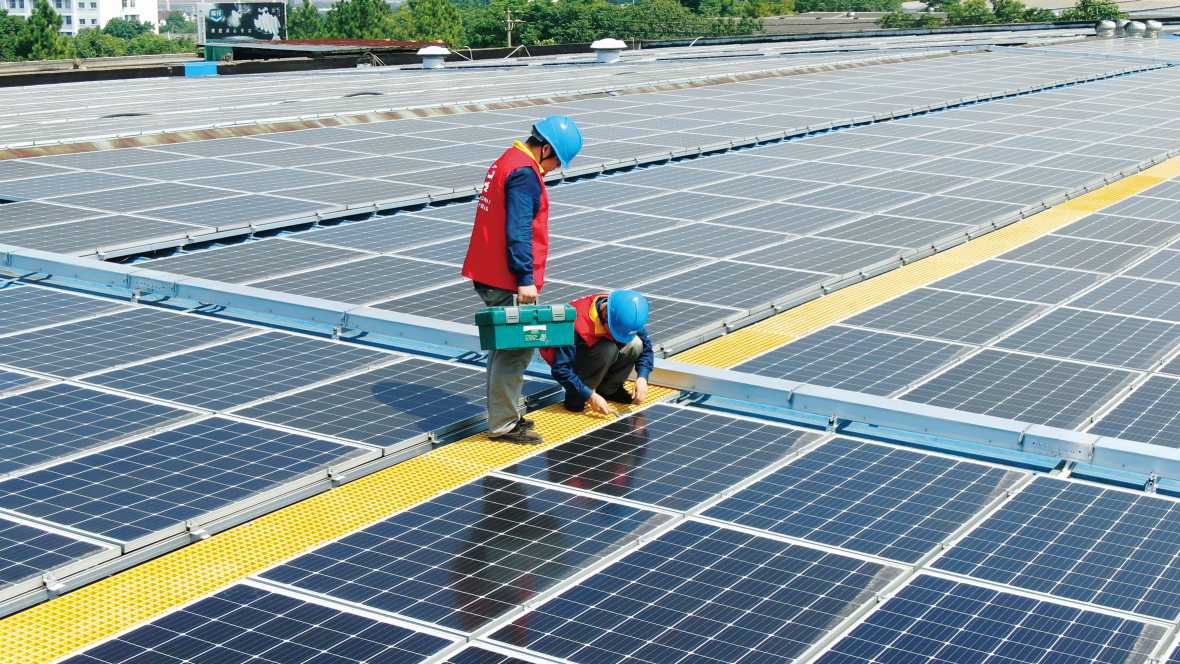
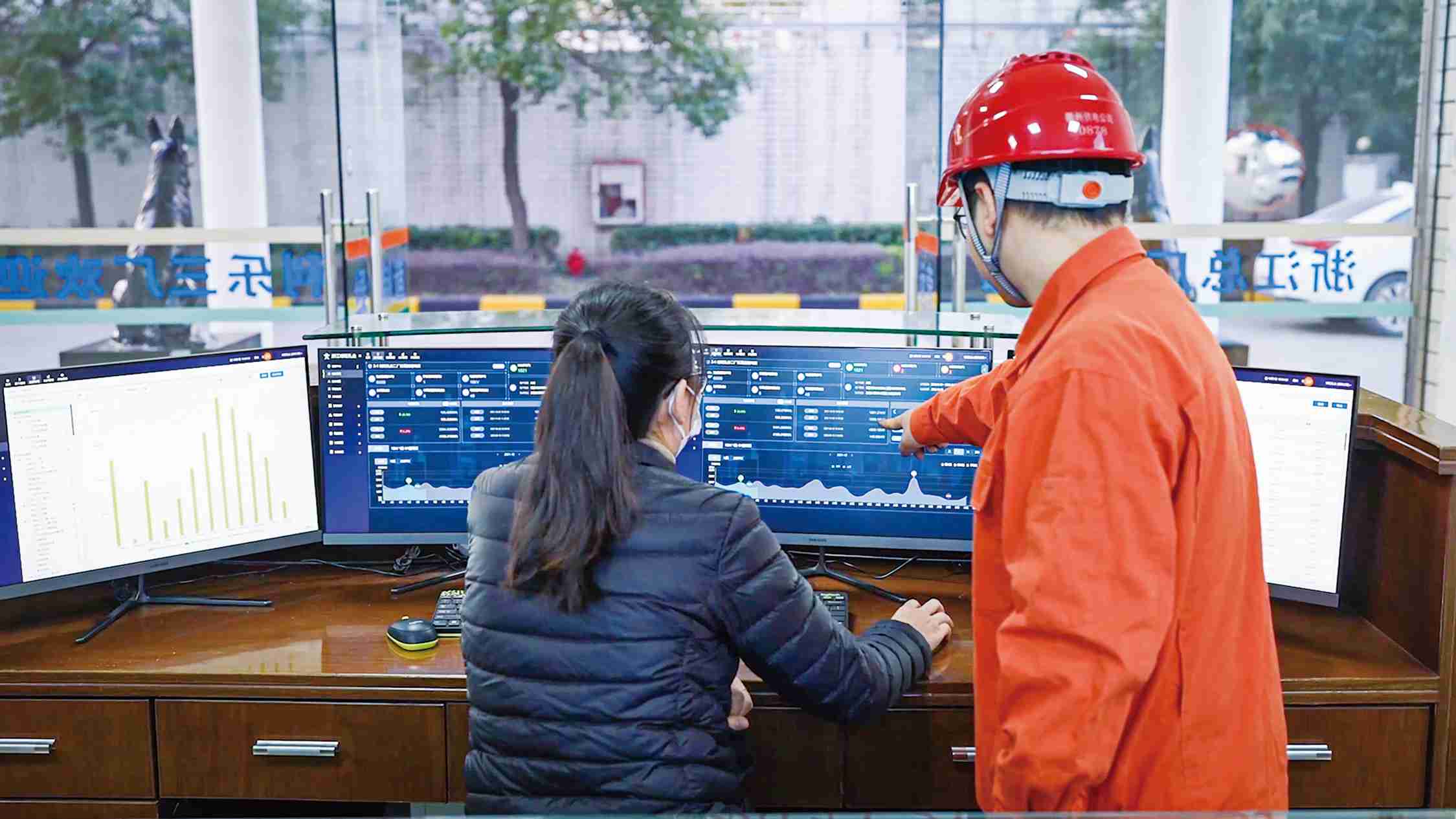
After the successful transformation of Ming-Want Dairy, the “green energy + energy efficien- cy” business model for carbon reduction saw rapid adoption across various sectors. It’s now active in 26 major energy-consuming enterprises in Quzhou, projecting enterprise cost reduc- tions exceeding RMB 100 million annually. If this model introduces multiple comprehensive energy service providers and scales province-wide or even nationally, the energy-saving and carbon-reducing impact could be monumental.
While this model advances carbon reduction for companies, it simultaneously fuels the power grid’s growth. It has drawn nearly RMB 100 million of new investments in Quzhou’s emerging energy industries, translating into a fixed annual income surpassing RMB 30 million.
Reflecting on their journey from a “muddled ledger” to a “clear balance sheet”, State Grid Quzhou Power Supply Company’s pragmatic experiences underline a pivotal notion: to shift societal production paradigms, our foundational logic must evolve. All these seemingly trivial adjustments, whether the sequence of energy use and budget, or the priority of inputs and benefits, imply a more rational, scientific and sustainable development philosophy. With these enlightening insights, State Grid Quzhou Power Supply Company has carved out a dig- ital business model for carbon reduction that benefits governments, consumers, and power grids alike. They have pinpointed a formula for regionallow-carbon growth within the “carbon peaking and neutrality” framework, igniting transformative shifts in this decarbonization era.

Looking forward, State Grid Quzhou Power Supply Company is poised to champion digitization as a catalyst for low-carbon strategies, unveiling more “Quzhou models” for energy-in- tense contexts, enhancing energy efficiency and fortifying carbon reduction abilities across society, thus contributing to the achievement of the “30-60” decarbonization goal.









 Back
to top
Back
to top